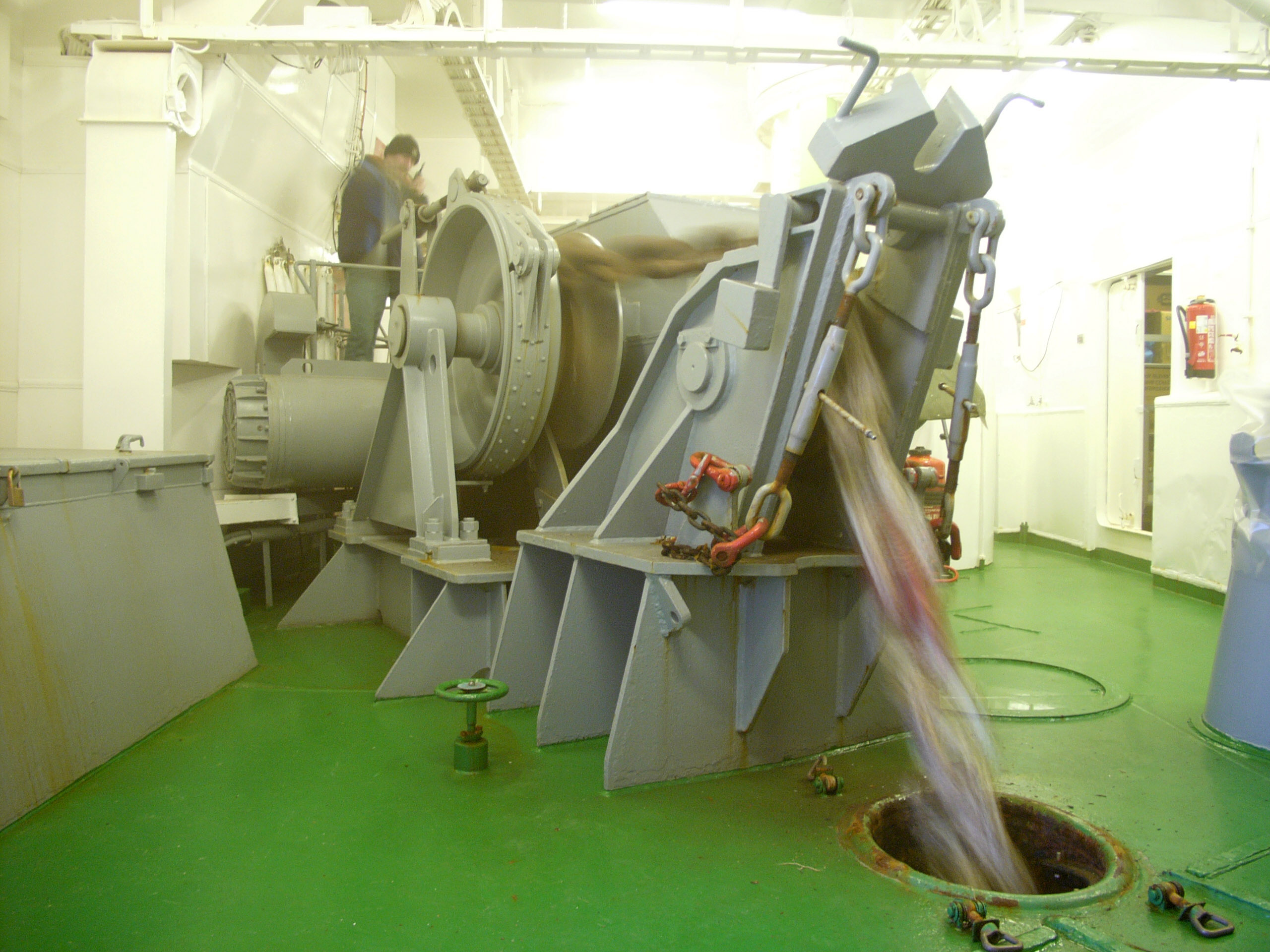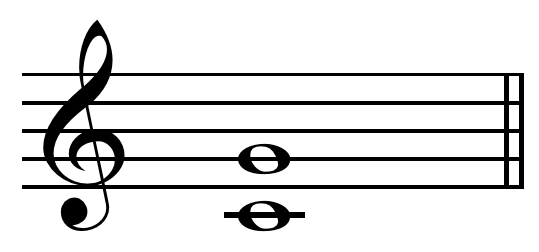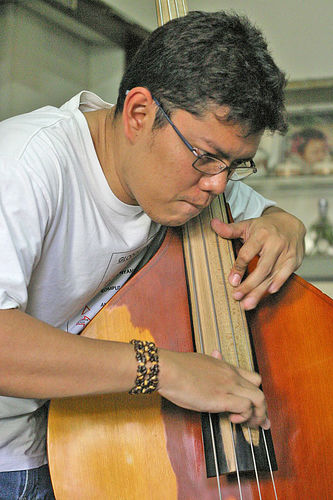|
String Quartets, Op. 76 (Haydn)
The six String Quartets, Op. 76, by Joseph Haydn were composed in 1797 or 1798 and dedicated to the Hungarian count Joseph Georg von ErdődyIn full, Joseph Georg Erasmus Adrian Gabriel Michael Anton Franz von Erdödy. (1754–1824). They form the last complete set of string quartets that Haydn composed. At the time of the commission, Haydn was employed at the court of Prince Nicolaus Esterházy II and was composing the oratorio '' The Creation'' as well as Princess Maria Hermenegild Esterházy's annual mass. Although accounts left by visitors to the Esterházy estate indicate that the quartets were completed by 1797, an exclusivity agreement caused them not to be published until 1799.Heartz, Daniel, ''Mozart, Haydn and Early Beethoven 1781–1802'', pp. 212–215, Norton (2009), Correspondence between Haydn and his Viennese publishers Artaria reveal confusion as regards their release: Haydn had promised Messrs. Longman Clementi & Co. in London the first publishing rights, but ... [...More Info...] [...Related Items...] OR: [Wikipedia] [Google] [Baidu] |
Joseph Haydn
Franz Joseph Haydn ( ; ; 31 March 173231 May 1809) was an Austrian composer of the Classical period (music), Classical period. He was instrumental in the development of chamber music such as the string quartet and piano trio. His contributions to musical form have led him to be called "Father of the Symphony" and "Father of the String quartet". Haydn arose from humble origins, the child of working people in a rural village. He established his career first by serving as a chorister at St. Stephen's Cathedral, Vienna, then through an arduous period as a freelance musician. Eventually he found career success, spending much of his working life as Kapellmeister, music director for the wealthy Esterházy family at their palace of Eszterháza in rural Hungary. Though he had his own orchestra there, it isolated him from other composers and trends in music so that he was, as he put it, "forced to become original". During this period his music circulated widely in publication, eventuall ... [...More Info...] [...Related Items...] OR: [Wikipedia] [Google] [Baidu] |
D Major
D major is a major scale based on D (musical note), D, consisting of the pitches D, E (musical note), E, F♯ (musical note), F, G (musical note), G, A (musical note), A, B (musical note), B, and C♯ (musical note), C. Its key signature has two Sharp (music), sharps. Its relative key, relative minor is B minor and its parallel key, parallel minor is D minor. The D major scale is: Changes needed for the melodic and harmonic versions of the scale are written in with accidentals as necessary. The D Harmonic major scale, harmonic major and Melodic major scale, melodic major scales are: Scale degree chords The scale degree chords of D major are: * Tonic (music), Tonic – D major * Supertonic – E minor * Mediant – F-sharp minor * Subdominant – G major * Dominant (music), Dominant – A major * Submediant – B minor * Leading-tone – Diminished triad, C-sharp diminished Characteristics D major is well-suited to violin music because of the structure of the instrument, ... [...More Info...] [...Related Items...] OR: [Wikipedia] [Google] [Baidu] |
Anchor
An anchor is a device, normally made of metal, used to secure a vessel to the bed of a body of water to prevent the craft from drifting due to wind or current. The word derives from Latin ', which itself comes from the Greek (). Anchors can either be temporary or permanent. Permanent anchors are used in the creation of a mooring, and are rarely moved; a specialist service is normally needed to move or maintain them. Vessels carry one or more temporary anchors, which may be of different designs and weights. A sea anchor is a drag device, not in contact with the seabed, used to minimize drift of a vessel relative to the water. A drogue is a drag device used to slow or help steer a vessel running before a storm in a following or overtaking sea, or when crossing a bar in a breaking sea. Anchoring Anchors achieve holding power either by "hooking" into the seabed, or weight, or a combination of the two. The weight of the anchor chain can be more than that of ... [...More Info...] [...Related Items...] OR: [Wikipedia] [Google] [Baidu] |
Variation (music)
In music, variation is a musical form, formal technique where material is musical repetition, repeated in an altered form. The changes may involve melody, rhythm, harmony, counterpoint, timbre, orchestration or any combination of these. Variation is often contrasted with musical Development (music), development, which is a slightly different means to the same end. Variation depends upon ''one'' type of presentation at a time, while development is carried out upon portions of material treated in ''many'' different presentations and combinations at a time. Variation techniques Wolfgang Amadeus Mozart, Mozart's Twelve Variations on "Ah vous dirai-je, Maman" (1785), a French folk song known in the English-speaking world as "Twinkle, Twinkle, Little Star", exemplifies a number of common variation techniques. Here are the first eight bars of the theme: Melodic variation Mozart's first variation decorates and elaborates the plain melodic line: Rhythmic variation The fifth variat ... [...More Info...] [...Related Items...] OR: [Wikipedia] [Google] [Baidu] |
Ternary Form
Ternary form, sometimes called song form, is a three-part musical form consisting of an opening section (A), a following section (B) and then a repetition of the first section (A). It is usually schematized as A–B–A. Prominent examples include the da capo aria "The trumpet shall sound" from Handel's '' Messiah'', Chopin's Prelude in D-Flat Major "Raindrop", ( Op. 28) and the opening chorus of Bach's '' St John Passion''. Simple ternary form In ternary form each section is self-contained both thematically as well as tonally (that is, each section contains distinct and complete themes), and ends with an authentic cadence. The B section is generally in a contrasting but closely related key, usually a perfect fifth above or the parallel minor of the home key of the A section (V or i); however, in many works of the Classical period, the B section stays in tonic but has contrasting thematic material. It usually also has a contrasting character; for example section A might ... [...More Info...] [...Related Items...] OR: [Wikipedia] [Google] [Baidu] |
Time Signature
A time signature (also known as meter signature, metre signature, and measure signature) is an indication in music notation that specifies how many note values of a particular type fit into each measure ( bar). The time signature indicates the meter of a musical movement at the bar level. In a music score the time signature appears as two stacked numerals, such as (spoken as ''four–four time''), or a time symbol, such as (spoken as ''common time''). It immediately follows the key signature (or if there is no key signature, the clef symbol). A mid-score time signature, usually immediately following a barline, indicates a change of meter. Most time signatures are either simple (the note values are grouped in pairs, like , , and ), or compound (grouped in threes, like , , and ). Less common signatures indicate complex, mixed, additive, and irrational meters. Time signature notation Most time signatures consist of two numerals, one stacked above the other: * ... [...More Info...] [...Related Items...] OR: [Wikipedia] [Google] [Baidu] |
Perfect Fifth
In music theory, a perfect fifth is the Interval (music), musical interval corresponding to a pair of pitch (music), pitches with a frequency ratio of 3:2, or very nearly so. In classical music from Western culture, a fifth is the interval from the first to the last of the first five consecutive Musical note, notes in a diatonic scale. The perfect fifth (often abbreviated P5) spans seven semitones, while the Tritone, diminished fifth spans six and the augmented fifth spans eight semitones. For example, the interval from C to G is a perfect fifth, as the note G lies seven semitones above C. The perfect fifth may be derived from the Harmonic series (music), harmonic series as the interval between the second and third harmonics. In a diatonic scale, the dominant (music), dominant note is a perfect fifth above the tonic (music), tonic note. The perfect fifth is more consonance and dissonance, consonant, or stable, than any other interval except the unison and the octave. It occu ... [...More Info...] [...Related Items...] OR: [Wikipedia] [Google] [Baidu] |
D Minor
D minor is a minor scale based on D, consisting of the pitches D, E, F, G, A, B, and C. Its key signature has one flat. Its relative major is F major and its parallel major is D major. The D natural minor scale is: Changes needed for the melodic and harmonic versions of the scale are written in with accidentals as necessary. The D harmonic minor and melodic minor scales are: Scale degree chords The scale degree chords of D minor are: * Tonic – D minor * Supertonic – E diminished * Mediant – F major * Subdominant – G minor * Dominant – A minor * Submediant – B-flat major * Subtonic – C major Music in D minor Of Domenico Scarlatti's 555 keyboard sonatas, 151 are in minor keys, and with 32 sonatas, D minor is the most often chosen minor key. '' The Art of Fugue'' by Johann Sebastian Bach is in D minor. Michael Haydn's only minor-key symphony, No. 29, is in D minor. According to Alfred Einstein, the history of tuning has led D mino ... [...More Info...] [...Related Items...] OR: [Wikipedia] [Google] [Baidu] |
Coda (music)
In music, a coda (; ; plural ) is a passage (music), passage that brings a piece (or a movement (music), movement) to an end. It may be as simple as a few bar (music), measures, or as complex as an entire section (music), section. In classical music The presence of a coda as a structural element in a movement is especially clear in works written in particular musical forms. Codas were commonly used in both sonata form and Variation (music), variation movements during the Classical era. In a sonata form movement, the recapitulation (music), recapitulation section will, in general, follow the exposition (music), exposition in its thematic content, while adhering to the home key (music), key. The recapitulation often ends with a passage that sounds like a termination, paralleling the music that ended the exposition; thus, any music coming after this termination will be perceived as extra material, i.e., as a coda. In works in variation form, the coda occurs following the last va ... [...More Info...] [...Related Items...] OR: [Wikipedia] [Google] [Baidu] |
Pizzicato
Pizzicato (, ; translated as 'pinched', and sometimes roughly as 'plucked') is a playing technique that involves plucking the strings of a string instrument. The exact technique varies somewhat depending on the type of instrument: * On bowed string instruments it is a method of playing by plucking the strings with the fingers, rather than using the bow. This produces a very different sound from bowing, short and percussive rather than sustained. * On keyboard string instruments, such as the piano, pizzicato may be employed (although rarely seen in traditional repertoire, this technique has been normalized in contemporary music, with ample examples by George Crumb, Tōru Takemitsu, Helmut Lachenmann, and others) as one of the variety of techniques involving direct manipulation of the strings known collectively as " string piano". * On the guitar, it is a muted form of plucking, which bears an audible resemblance to pizzicato on a bowed string instrument with its relatively ... [...More Info...] [...Related Items...] OR: [Wikipedia] [Google] [Baidu] |
Ländler
The Ländler () is a European folk dance in time. Along with the waltz and allemande, the ländler was sometimes referred to by the generic term German Dance in publications during the late 18th and early 19th centuries. Despite its association with Germany, the ländler was danced in many European countries. Composers from a variety of European nations wrote music for the ländler dance; including Austria, Switzerland, Bohemia, Moravia, Slovenia and northern Italy in addition to Germany. History The ländler is a partner dance that strongly features hopping and stamping. It might be purely instrumental or have a vocal part, sometimes featuring yodeling. When dance halls became popular in Europe in the 19th century, the Ländler was made quicker and more elegant, and the men shed the hobnail boots that they wore to dance it. Along with a number of other folk dances from Germany and Bohemia, it is thought to have influenced the development of the waltz. A number of cla ... [...More Info...] [...Related Items...] OR: [Wikipedia] [Google] [Baidu] |
Scherzo
A scherzo (, , ; plural scherzos or scherzi), in western classical music, is a short composition – sometimes a movement from a larger work such as a symphony or a sonata. The precise definition has varied over the years, but scherzo often refers to a movement that replaces the minuet as the third movement in a four-movement work, such as a symphony, sonata, or string quartet. The term can also refer to a fast-moving humorous composition that may or may not be part of a larger work. Origins The Italian word ''scherzo'' means " joke" or "jest." More rarely, the similar-meaning word ''badinerie'' (also spelled ''battinerie''; from French, "jesting") has been used. Sometimes the word ''scherzando'' ("joking") is used in musical notation to indicate that a passage should be executed in a playful manner. An early use of the word ''scherzo'' in music is in light-hearted madrigals of the early baroque period, which were often called ''scherzi musicali'', for example: * Claud ... [...More Info...] [...Related Items...] OR: [Wikipedia] [Google] [Baidu] |




